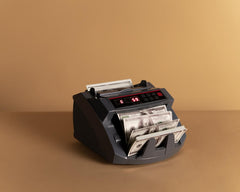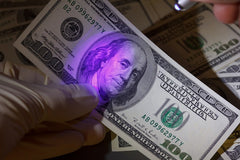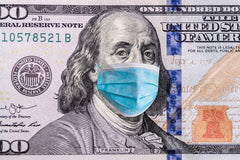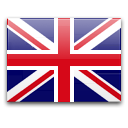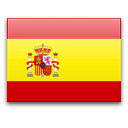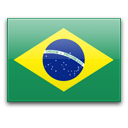Your cart is currently empty.

- Jan, 15 , 21
- 0 comments
Germy Things You Should Never Forget to Clean
Contents
- Disinfection in Our Daily Life
- How to Disinfect Your Surroundings and Frequently Touched Objects
- Toothbrushes, Toothbrush Holders, and Bath Accessories
- Cutting Boards, Sponges, and Dish Towels
- Light Switches and Door Handles
- Remotes, Phones, and Electronics
- Mattresses
- Disinfection Tips
- How to Sterilize Something
- Conclusion
Disinfection of surfaces or objects is something that we do every day to remove the potentially large number of germs in our homes and decrease the risk of spreading infection. Studies have shown that the average person’s hands have around 3000 germs on them. Certain objects are considered “high touch” as we come into contact with and use them multiple times a day. This includes light switches, door handles, TV remotes, and our toothbrushes. Daily and thorough disinfection of these high touch objects and surfaces is important when maintaining a healthy environment for yourself and your loved ones to live in.
To boost your cash management efficiency, contemplate our cutting-edge bill counting machine. It substantially cuts down on staff time dedicated to cash-related duties, streamlining your procedures and reducing transaction errors, thus guaranteeing higher precision and reliability.
Disinfection in Our Daily Life
Cleaning objects and surfaces daily removes germs and helps to prevent the spread of illnesses. Cleaning that should be practiced at home includes:
- Regular cleaning - this requires the use of cleaning products and soap and water to remove dirt that builds up on carpets, walls, and windows.
- Sanitizing - this helps to remove grime and most germs from surfaces and objects after being cleaned. It is best to sanitize objects and surfaces that do not require harsh chemicals to clean them and are not at risk of coming into contact with any pathogens. An example of this would be cooking utensils and children’s toys. Homemade disinfectants and sanitizers may be created by mixing water and bleach. Solutions with higher amounts of bleach are disinfectants, while lower concentrations create sanitizers.
- Disinfection - How do you know if an item can be disinfected? Disinfection is usually reserved for messy spills and bodily fluids. Objects that come into contact with pathogens, such as toilets and sinks, need to be disinfected. To comply with EPA standards, disinfectants are required to eliminate 99.999% of germs, while sanitizers are only required to kill 99.9%.
How to Disinfect Your Surroundings and Frequently Touched Objects
Toothbrushes, Toothbrush Holders, and Bath Accessories
Items that reside in the bathroom require special attention when it comes to disinfection. Although a lot of bacteria goes down the drain after you have brushed your teeth, a significant amount lingers on your toothbrush and the toothbrush holder that it is kept in. Make sure to either run your toothbrush under hot water for 15 minutes or soak it in hydrogen peroxide for 5 minutes and rinse it after. Another option is to place your toothbrush in boiling water for 3 mins to kill most germs. The way you clean your toothbrush holder depends on the material that it is made out of. While metal holders can simply be popped into the dishwasher, other materials may be harder to clean. Ceramic holders may be soaked in denture cleaner and then rinsed off.

It may be easy to neglect bathroom accessories such as shower curtains and toilet brushes, but they need to be cleaned regularly to ensure your bathroom is as germ-free as possible. Homemade cleaning solutions or specialized bathroom cleaning products may be used to disinfect bathroom accessories.
Cutting Boards, Sponges, and Dish Towels
Disinfecting and sanitizing is essential in the kitchen as this is where your food is prepared and all surfaces and utensils need to be cleaned with soapy water before and after preparing food. Wipe down appliances, cutting boards, and utensils. This helps to prevent cross-contamination that might occur between cutting boards and surfaces and cause food poisoning. Dishtowels need to be washed frequently on a high wash and dry setting, while sponges need to be replaced often as their wet, porous surface is a perfect home for germs to live and multiply.

Light Switches and Door Handles
Door handles and light switches are touched frequently , making them susceptible to many different types of germs. Disinfectant wipes may be used, however, the surface or object that they are placed on needs to remain wet for a minimum of 10 minutes. This may be difficult to achieve as disinfectant wipes contain alcohol, which dries quickly and so this will require the use of multiple wipes. A fast-acting spray-application disinfectant can destroy pathogens within minutes while also remaining wet on hard surfaces, ensuring that they are properly disinfected.
Remotes, Phones, and Electronics
Remote control and electronics are touched multiple times daily, resulting in a build-up of grime and germs. Certain electronics, like cellphones, come into close contact with your ears, nose, and mouth - which are all infection gateways. Studies have shown that cellphones carry up to ten times more germs than toilet seats. Remote controls should be cleaned with a vacuum cleaner or wiped down with a dry cloth and later disinfected using a disinfectant wipe. It is very important to first unplug all electronics before disinfecting them and to follow the same steps as when you disinfect a remote control. Ensure that you have sufficiently wrung out any moisture from the wipe to prevent moisture from leaking into the cracks of your electronics and damaging them.

Mattresses
We spend a third of our lives in bed. That is why our bedding and mattress needs to be cleaned and disinfected regularly. It is best to clean your mattress on a warm, sunny day to ensure that it dries thoroughly and has sufficient sun exposure. UV rays emitted by the sun help to eliminate bacteria. First, remove as much dust as possible from the mattress and follow this up by running a steam cleaner across the mattress to kill any germs and mites. A small amount of baking soda sprinkled onto the mattress will help to refresh the upholstery and remove any unpleasant smells. The next step involves using an antibacterial spray to eliminate more germs. Make sure to lightly spray the mattress to prevent any mildew and mold from developing if the mattress is too damp. After spraying, wipe the mattress with a clean cloth that is only slightly damp. After your mattress has been disinfected allow it to dry thoroughly in the sun before covering it with clean bedding.
Disinfection Tips
- Wear disposable or reusable gloves when cleaning and disinfecting.
- First clean surfaces with soapy water before disinfecting them.
- Closely follow cleaning instructions given on labels.
- Clean your hands using soap and water for a minimum of 20 seconds.
- If possible, have a different bathroom and bedroom to use if a member of the family fallsill.
How to Sterilize Something
There are three methods of sterilization: chemical, physical, and physicochemical. Chemical methods utilize gaseous and liquid chemicals. Physical methods involve filtration, radiation, and heat. The physiochemical method is a mixture of both physical and chemical methods. This method of disinfection is usually reserved for places that need to be sterile, such as hospitals or other healthcare spaces. Sterilization is rarely necessary in the house.
Conclusion
Disinfecting surfaces and objects is important to prevent the spread of germs and illnesses amongst yourself and your loved ones. Always ensure that you routinely clean all the things you come into contact with while also taking the necessary precautions when handling cleaning products and disinfectant solutions.Search
Custom Menu
Recent Post
Archive
- April 2022
- September 2021
- August 2021
- July 2021
- March 2021
- February 2021




